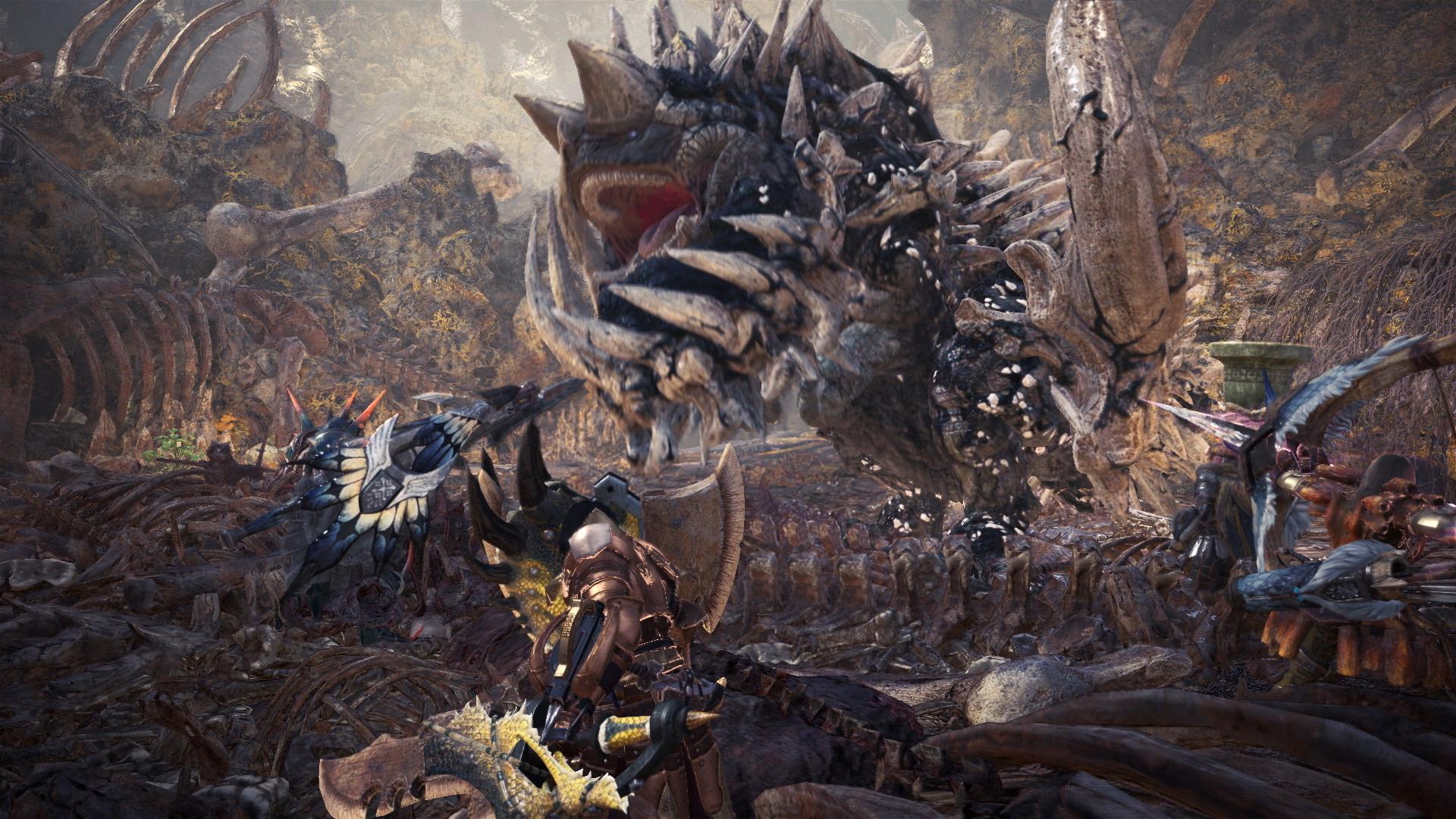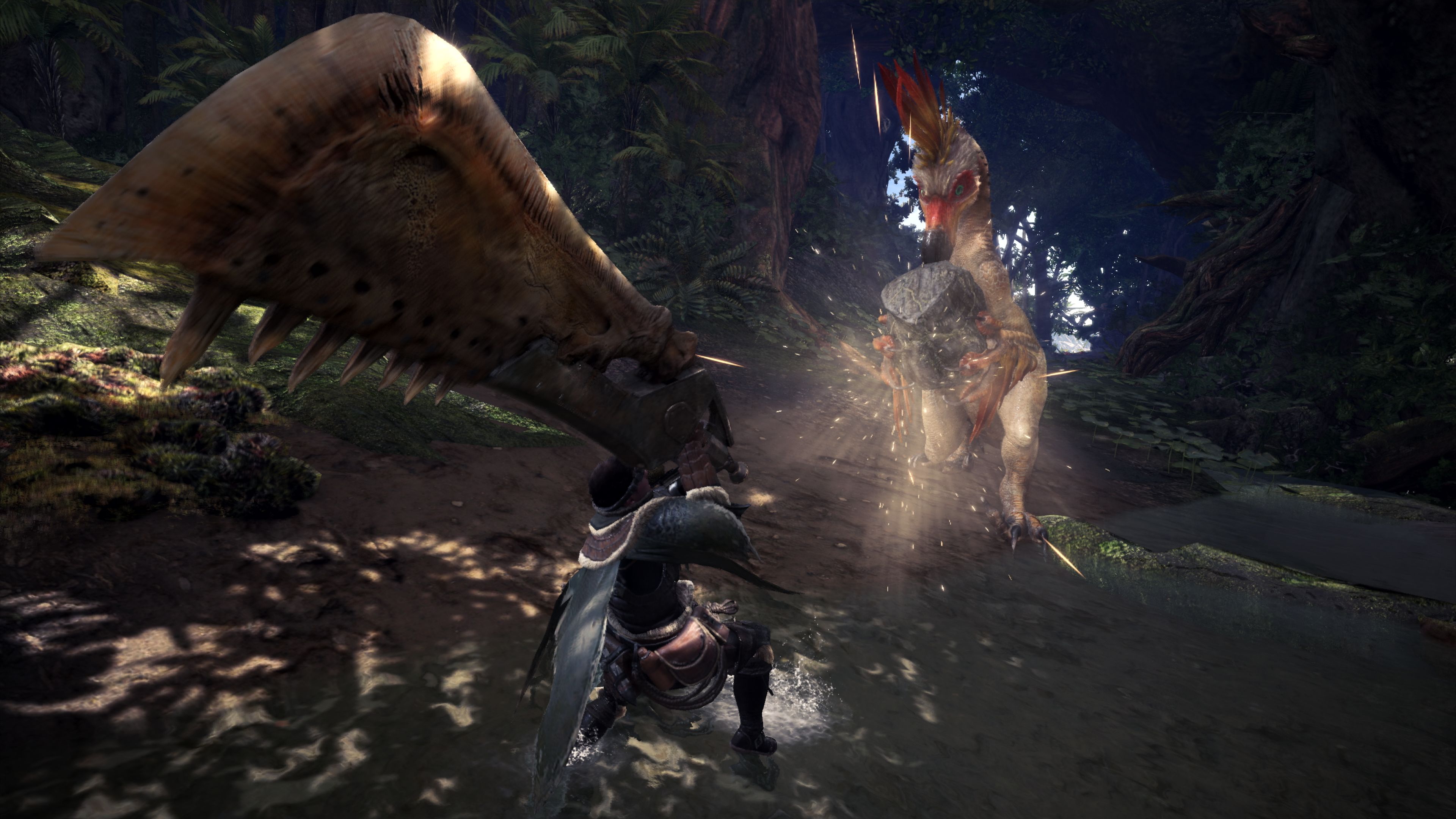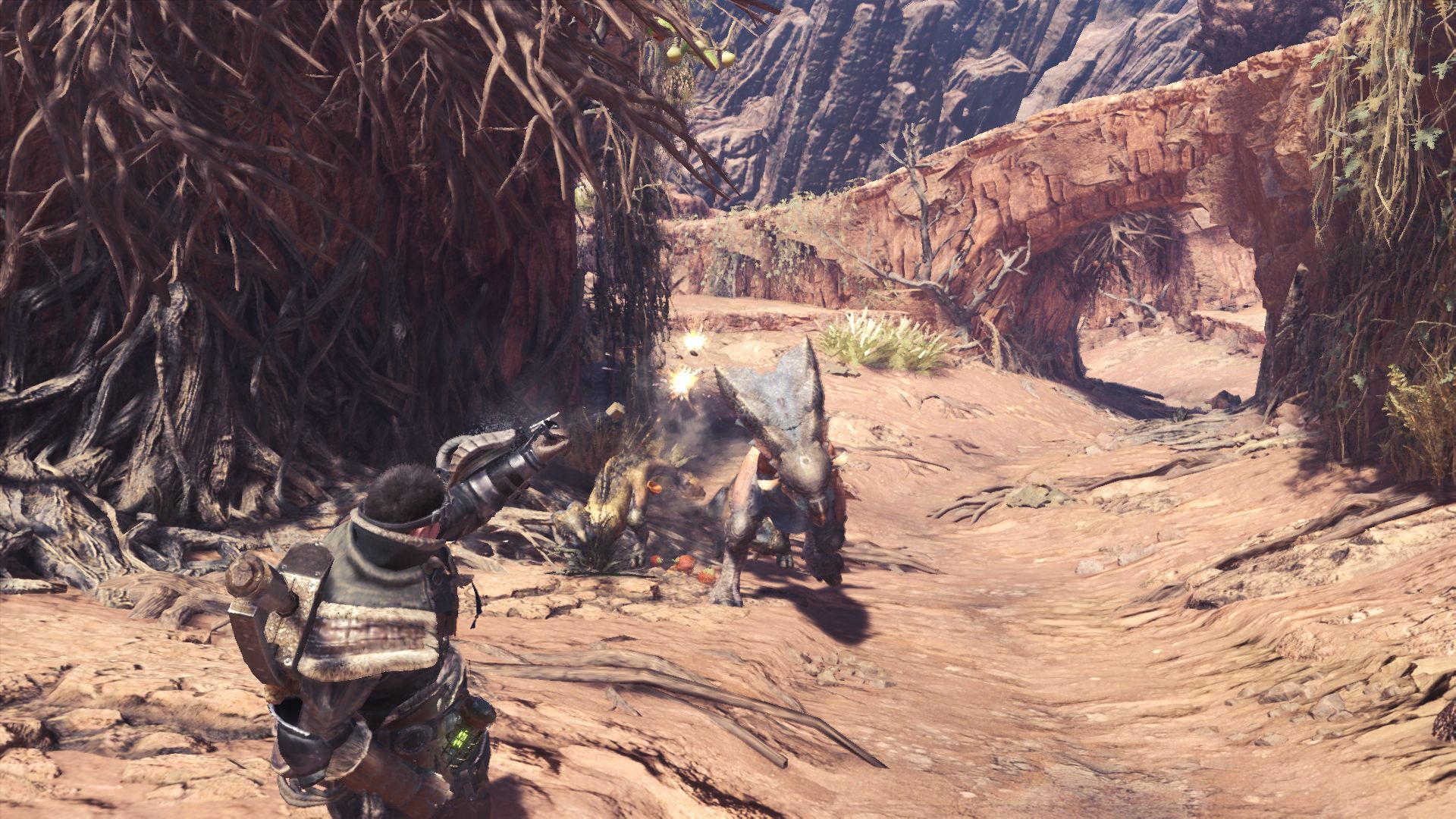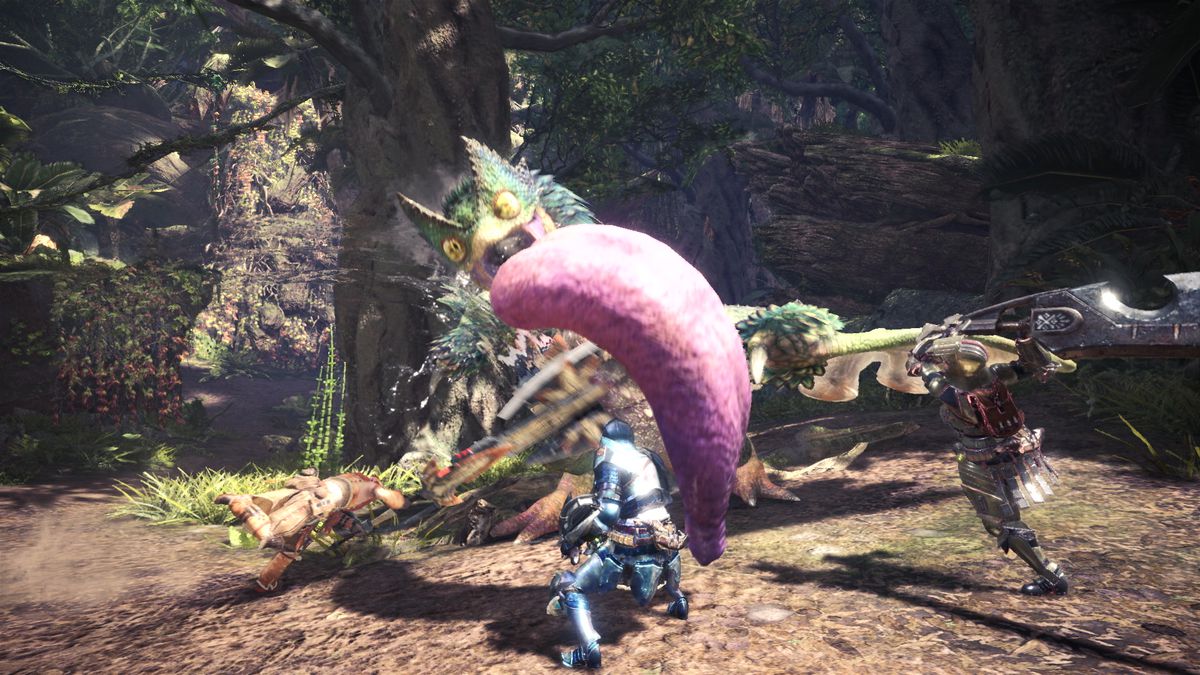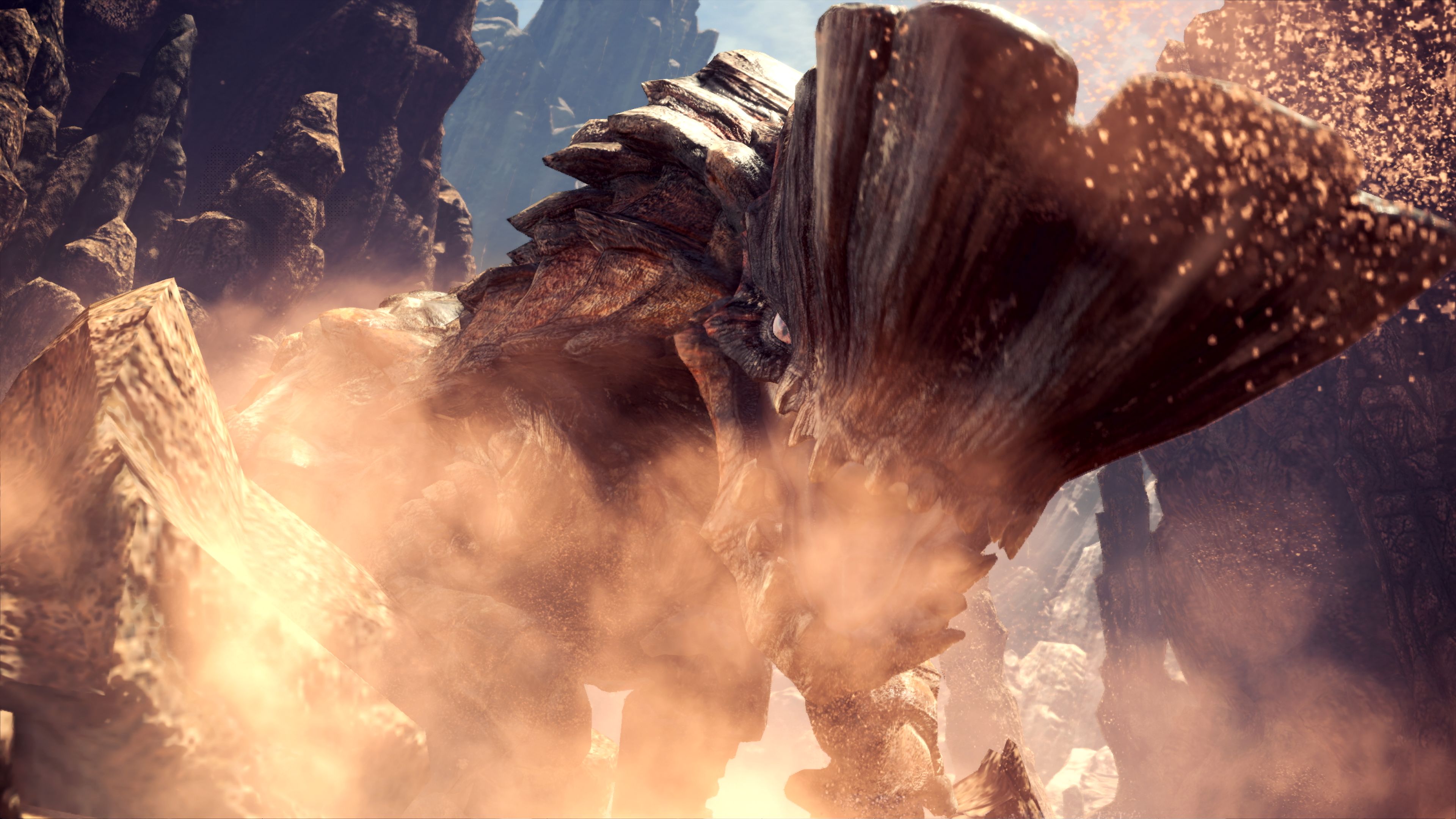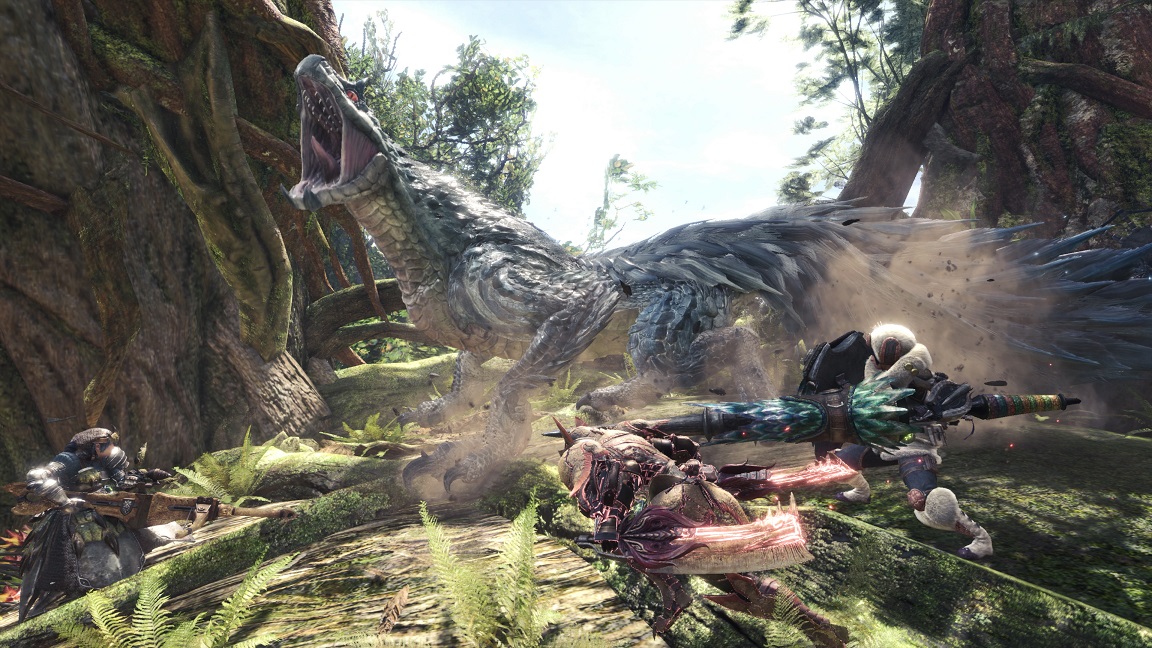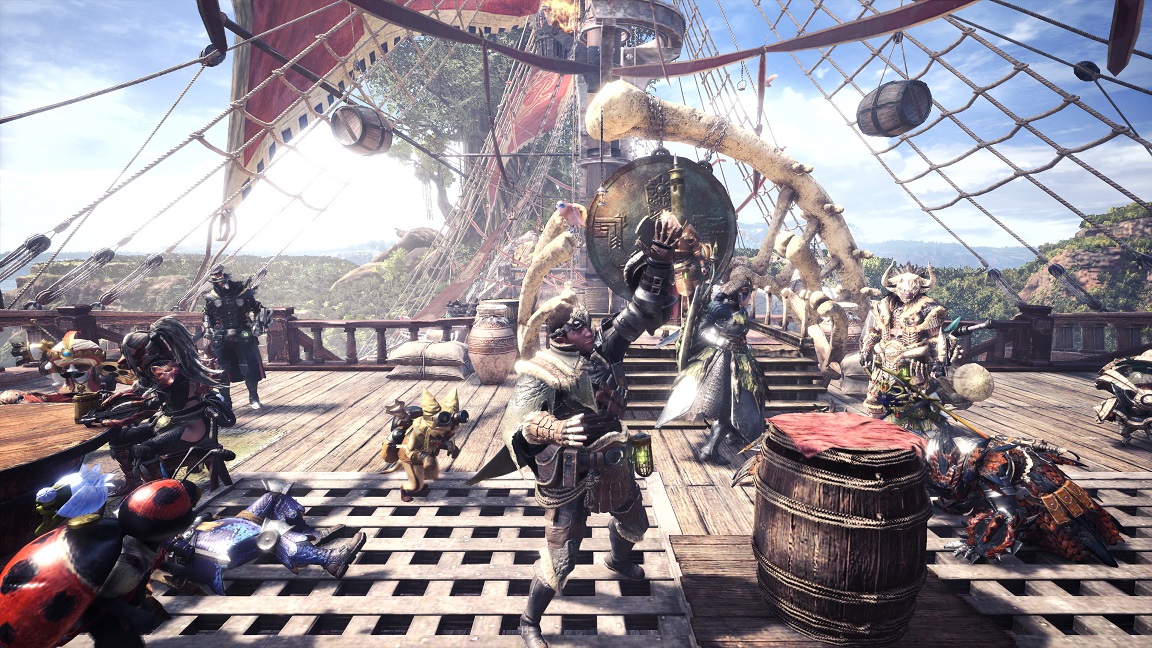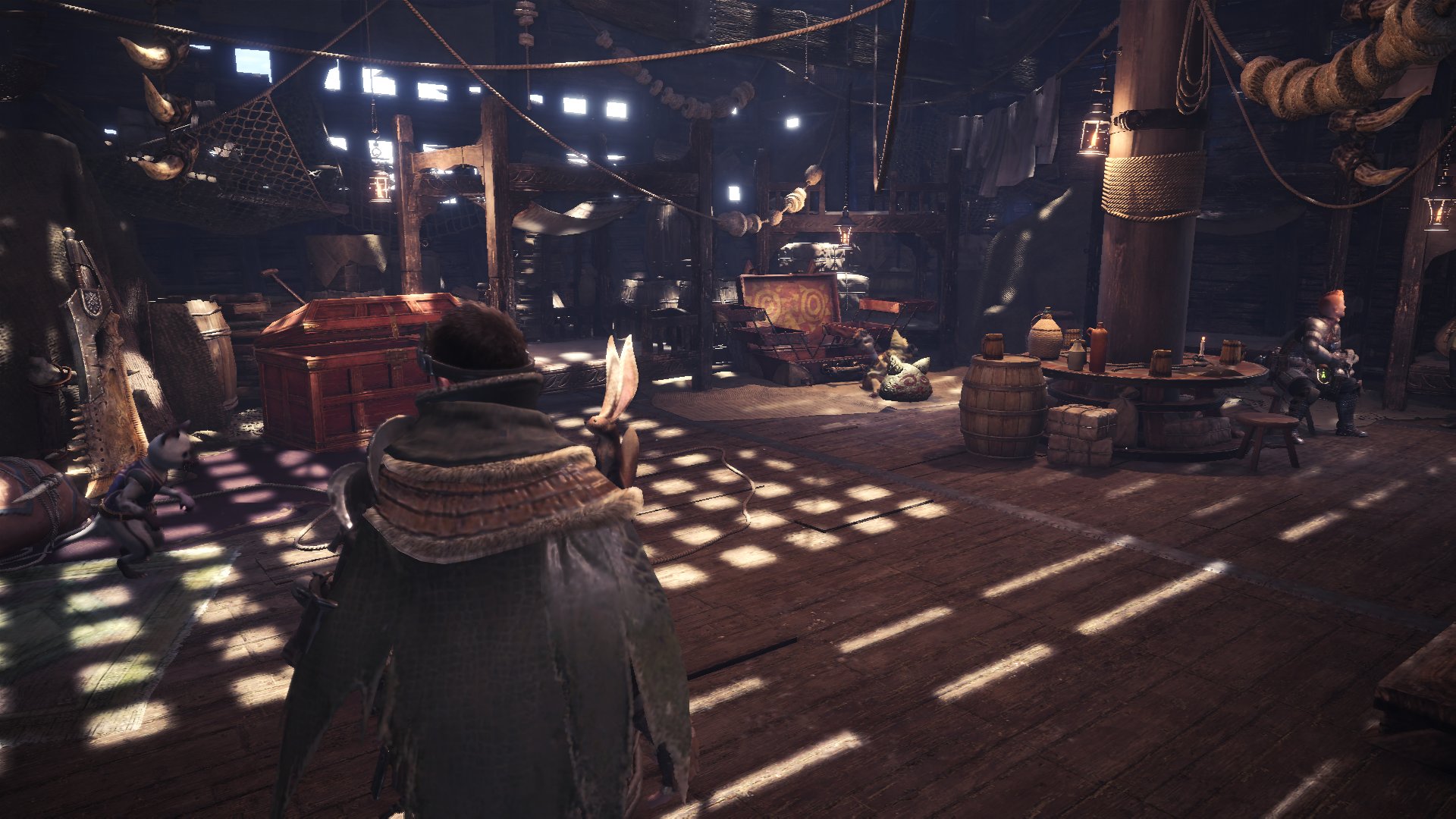Platforms:
Xbox One, PS4, PC
Released:
January 26, 2018
Publisher:
Capcom
Developer:
Capcom
Monster Hunter as a franchise has always felt a bit like a secret club that only its members truly understand. It’s known for its difficulty spike and lack of hand-holding (despite primarily featuring on handheld consoles like the 3DS in recent years) which can be frustrating and off-putting for newcomers, while remaining devilishly challenging and interesting for its advocates. Monster Hunter: World is the first time the series has launched simultaneously worldwide to Western audiences on a home console platform, and despite some clever, relevant changes, it remains to be a beast of a game that is incredible, but not for the faint-hearted.

The series is built on an addictive and satisfying gameplay loop, where you start with very minimal supplies along with basic weapons and armour. You hunt and kill giant creatures, each of which feels like a gigantic boss battle, then use the parts that you harvest from them to create new gear, upgrade your weapon and then go out to hunt bigger and nastier monsters out in the world. It’s the foundation of Monster Hunter, with these epic scale battles testing the skills you’ve learned and pushing you to be strategic.
Armour and weaponry of all kinds come with buffs, strengths and weaknesses, so you’ll need to be smart about which ones you select to use for any given battle. For example, if you’re up against a fire breathing dragon, you’re going to want some fire resistant gear. You’ll have the option to choose the weapon you like the look of from a bunch of them to begin with, but you’ll want to start formulating your own mini-goals to make sure you acquire the right materials to enhance the relevant strengths or you’ll struggle.
This is where Monster Hunter: World remains tricky for newbies. The training area is pretty basic, but more important it’s unclear to the uninitiated what tricks you should use to tackle certain beasts, as it strays from other RPG’s that often have a clear sign indicating that the new gear you’ve found is better and you should sell or destroy the old gear. You’re left to figure out for yourself what you need to do to advance, and with each major battle feeling incredibly unique and exciting, it’s a learning curve that is tough but very satisfying once you learn what makes it tick.
The story is pretty simple, with one particular giant beast consuming most of the narrative as you clear areas, set up camps and make allies to be able to counter the impossibly huge foe. The characters are fine enough, but it’s the monsters themselves that are the true stars of the show, as they should be. They vary so heavily in terms of art direction and personality that the thrill of the hunt makes them completely enjoyable to do battle with, even if they overpower you and knock your ego down a few pegs the first time you meet them.
“…a flying monster swooped in, picked him up and dropped him on his head, allowing me enough time to recover…”
From a weird bird-dinosaur hybrid that uses big rocks as a shield mechanism to a super scary looking giant lizard that rolls around using other monsters bones as a spiked coat of armour, there is real variety in each intimidating fight. Battles often take on multiple stages and they will limp off to try and find somewhere to recover if they’ve taken too much damage, cuing you so you know you’re making progress. What makes them even more appealing is that each zone that you encounter has multiple monsters wandering around, living their best monster life as they eat smaller monsters, prowl around or just sleep in their nests.
There’s a food chain as well, which means that the boss-like beasts will just as quickly turn on each other along with trying to take you down. It’s fun to watch them interact with one another, as some will fight back while others simply high-tail it trying to get away to survive another day. You can even use this to your advantage in battle if the opportunity presents itself; there was one point where I was stunned by the fierce T-Rex like Anjanath, on the ropes and in trouble, but just before I was knocked out a flying monster swooped in, picked him up and dropped him on his head, allowing me enough time to recover and watch them try to decimate each other. Organic moments like this make the world feel truly alive and breathing, and it’s such a pleasure to explore and see what happens.
As a fan, I was worried that in an effort to meet a larger audience that they would make the game more “mainstream” and easier to understand. Instead, the game keeps its charm entirely intact, while making improvements that are welcome to veterans and newcomers alike. Crafting makes more sense, there are clearer paths to better gear requirements and looting is a quicker process.
The best addition to Monster Hunter: World is the scout-flies, glowing bugs that act as a guide to lead you to the monster you’re hunting. This isn’t just a gift though; you have to find footprints, mucus blobs and scratch marks which, once studied, increase your understanding of what the beasts strengths and weaknesses are, along with their likely location. Once you’ve discovered enough, the scent is picked up and you can trace their location easily.
For context, in previous Monster Hunter games, this was a random process where you’d just hope to stumble upon them, and then when they scurry off to try and heal, you’d be left to start from scratch. It caused some of the hunts to end in a frustrating fashion as time ran out, but that has been completely dealt with here. It doesn’t feel like it’s too easy, as it’s built into the games ethos of the researchers trying to learn more about the beasts that inhabit the world, and it makes for a slicker, better experience.

It’s fantastic to see what the art team is capable of on this current generation hardware, too. Monster design is intricate and detailed, really bringing out their personality through clever animations and small touches, like the ability to actually lop off a tail or part of some scales and see them fling off onto the ground to be collected. The design of the environments is also gorgeous, at times even stunning; the Coral Highlands stand out particularly for their lush pink and purple flora, floating magical jellyfish in the air and trees made of beautiful coral.
When confined to a handheld, scope and scale was more of a concept. Here, scope and scale is fully realised, with giant environments full of loot, smaller creatures, giant roaming monsters and more, not requiring any loading screens (after the initial load-in). Finally I can look up and see a huge hulking creature in front of me, see the detail in the design of each weapon and piece of armour, and when you’re able to position yourself to mount monsters for maximum damage while they buck and try to throw you off, it finally feels as epic and satisfying as it should.
Multiplayer is relatively seamless too and is pivotal to getting the absolute most out of this gigantic title. Not only is it crucial to share tips and tricks with your squad mates, but the game is infinitely more fun when you’re working together to take down monsters. It opens up more possibilities for weapons, too – the ranged, gun-type weapons aren’t the easiest to deal with in a single player environment when you’re the only target, but with a few of you it’s entirely plausible to sit back and take pot-shots while other hunters go for close-range sword and axe attacks.
“There’s actually so much to do in Monster Hunter: World that it’s a little bit daunting in the best possile way…”
You can complete main story quests in multiplayer too from start to finish (a first for the series), but everyone has to watch the unskippable cut-scenes they include which can slow things right down. You also need to use the consoles home menu to invite friends into your server, which then allows you to post a quest on the board that can be joined by other players while you make preparations. It’s a little trickier than just partying up and playing like you may be used to, but you adjust eventually for its idiosyncrasies and forgive it entirely once you’re fighting side-by-side.
Once you’ve finished the main storyline, more quests open up with more difficult monsters to hunt and modifications made to previous ones, along with more gear that you can collect. There’s actually so much to do in Monster Hunter: World that it’s a little bit daunting in the best possible way, with bounties to complete, deliveries, side-quests, investigation missions… I haven’t even touched on your Palico, your own personal customisable cat-like creature that fights for you and heals you in combat while looking freakin’ adorable in the process, plus the Palico’s back at your main hub that cook meals for you in what has to be the best cut-scene ever created in a video game (I still don’t skip it even though I’ve watched it easily over a hundred times). There’s lots I haven’t touched upon, as part of the fun is discovering all of these mechanics and how they intertwine for yourself.
Positive:
- Hunting monsters remains exciting
- Gameplay loop of hunt, kill, craft is addictive
- Gigantic, gorgeous environments
- Monster AI is impressive and varied
Negative:
- Online matchmaking a little convoluted
- Still quite tough for newcomers
There is so much beaming personality, so much attention to detail and such an incredible amount of depth in the gameplay systems that Monster Hunter: World is, for me, the best the franchise has ever produced. After playing these games for almost fifteen years, it finally feels like the vision has been fully realised, and it’s fantastic to see. The intricate way monsters behave and the addictive gameplay loop of hunt, kill, craft and then getting right back out there on the hunt again is the strongest it’s ever been, bolstered by the ability to do so with friends in glorious HD. While still tough on new players, once you get over the initial hurdle of learning the ropes, it becomes one of the most thrilling and captivating games you’ll ever play. Give it a try – I promise you won’t regret it.

